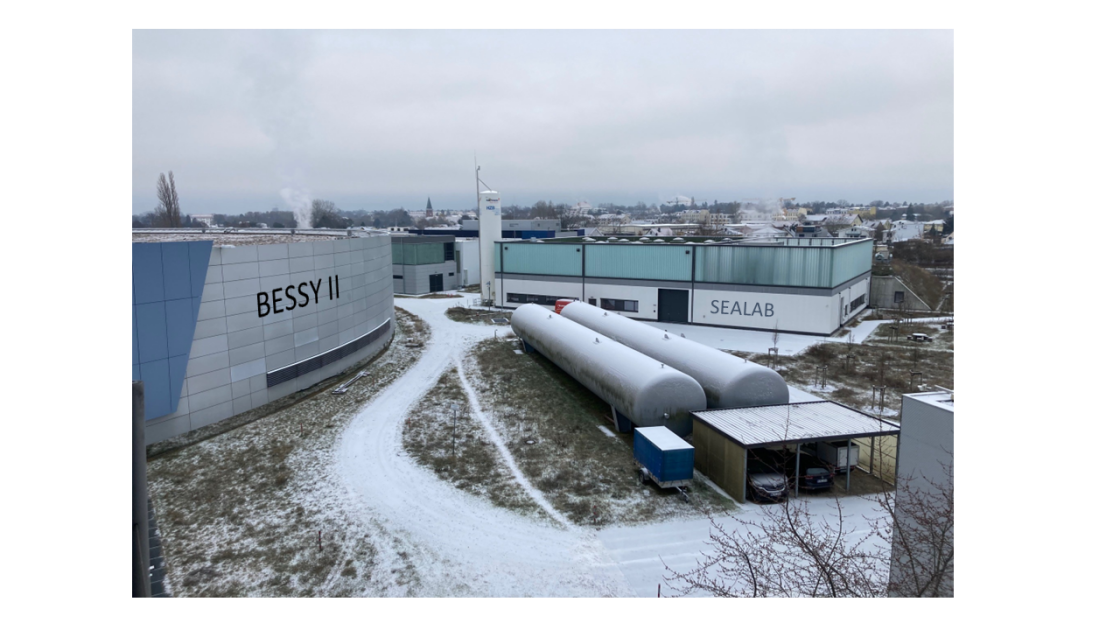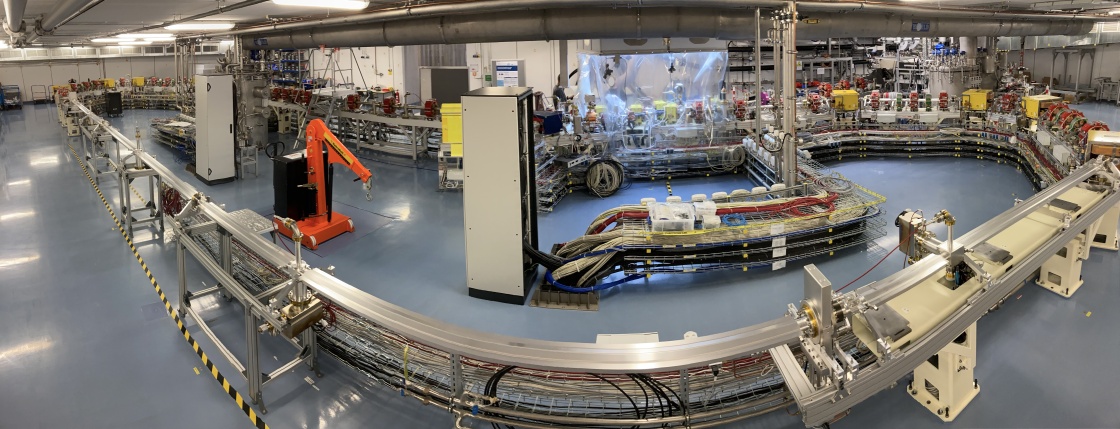Institute Science and Technology of Accelerating Systems
SEALab
SEALab (Sustainable Electron Accelerator Laboratory) is the successor and continuation of the former bERLinPro Energy Recovery Linac (ERL) prototype project, which had the goal to design, construct and commission a 50 MeV single turn high beam intensity ERL with a so far never demonstrated beam current of 100 mA in the recovery mode of operation.
At the same time, that facility should allow for a normalized beam emittance of better than 1mm.mrad and pulse length of shorter than 2 ps. The idea was to prove, that such a facility could serve for many different purposes and applications from next generation light source, inverse compton scattering source, ion beam cooler by electron beam, nuclear physics or high energy physics electron-proton collider factory.
Since end of 2020 , this project is officialy finished with finalizing the warm machine, the building and infrastructure and for the commissioning was transitioned into this new era, in which the ERL studies will continue, but the scope of the machine will be widened for a far greater range of applications, as e.g. expanding the injector towards an ultra-fast electron diffraction (UED) facility, test new diagnostics concepts, beam based feedback methods, supported or even driven by artificial intelligence or machine learning concepts. In addition, one main focus of accelerator research is the improvement of the sustainability and reduction of the carbon footprint of such large scale facilities. For that, SEALab will be driver and support the development of tuning methods by e.g. ferroelectric fast reactive tuners to reduce the Radiofrequency (RF) power need to stabilize the close to zero beam-loading SRF cavities of the main Linac. This will be accompanied by new methods with the low level RF field control of the cavity accelerating eigenmodes to keep the resonators always for a given state of the machine on the optimum and such low RF power consumption working point.
In case of an upgrade of the current injector with an SRF photo-injector being capable of accelerating towards tens of mA beam current, for the beam dump line applications like e.g. waste water treatment by iradiation might be possible to be demonstrated.
Figure 2 displays with the example of bERLinPro the principle of an ERL, as it was first proposed by Mary Tigner from Cornell University in 1965 Maury Tigner, A possible apparatus for electron clashing-beam experiments, Nuovo Cim., 37:1228–1231, 1965.
An overview of the main components of the ERL is given in Figure 3:
The high quality low emittance beam is created in an SRF photo-injector, where a laser pulse from the photo-cathode laser system interacts with a photo-cathode in the half-cell of a 1.4xl/2 SRF cavity, where the high quantum efficiency normal-conducting semiconductor material cathode is placed in the center of the opening of the backwall on a thermally and electrically isolated cathode carrier. The cathode itself is prepared in a dedicated laboratory and transported to te cathode transfer system, which allows exchange of used cathode with fresh ones. The by the laser pulse emitted electron bunch is immeditaly accelerated by the fields of the SRF cavity, focussed downstream by a SC solenoid magnet to leave the SRF module to pass a first diagnostic section, which also houses the insert optics for the laser. It is then further accelerated and longitudinally compressed in a three two-cell SRF cavity high power booster module to then enter the main recirculator via the merger chicane.
Figure 3 shows cutviews of the two SRF cavity types of the injector. Note, that so far the SRF photo-injector cavity is limited by the current power couplers to average currents of 10 mA.
Table 1 summarizes the beam parameters of the current injector setup and the goals of the ERL studies.
| Parameter | ERL | Injector/UED |
| Beam energy (MeV) | 50 | 6.5-10/2 |
| Iavg (mA) | 100 | 6-10/0.0025 |
| Laser freq. (MHz) | 1300 | 50, 1300 |
| RF freq. (MHz) | 1300 | 1300 |
| Emittance Εnorm (mm mrad) | 1 (0.6) | 0.6/0.03 |
| σt (ps) | 2 (0.1) | 0.02-2 |
| Bunch charge (pC) | 77 | 0.05-400 |
Table 1: Beam parameters of the ERL and the injector for SEALab/bERLinPro
In the merger, the beam can be optionally transported in a straight line to the diagnostics section of the injector. This same beamline can also serve in the future as an UED facility.
Sending the beam in the main recirculator beamline will thus accelerate it to 50 MeV by the main Linac and after one turn it will arrive by pi phase shifted with respect to the fundamental mode in the Linac cavities to then decelerate the beam to the injection energy of 6.5 MeV. This beam of 650 kW power will finally be dumped in the respective beam line.
A main limitation for high current beam acceleration and recovery of the beam power within the same Linac is the excitation of higher order modes (HOMs) of the resonant structures and by that an unwanted negative feedback between dipole like Eigenmodes and the beam‘s transverse coordinates, which can finally lead to a loss of the beam by the so called regenerative beam break-up (BBU). To suppress this, there are limited tools for single RF modes to suppress this effect via beam optics, but at best, the cavity design itself allows for low impedance of these HOMs and strong damping of their excitation.
Figure 4 shows an overview of the orginal planned Linac cavity with an HOM damping concept based on rectangular waveguides attached close to the cavity‘s enlarged beam tube, which itself allows propagation of the lowest dipole HOMs. This concept was proved to be feasible with a manufacturing study and an HOM absorber prototype built at JLab. As this whole concepts allowed for beam currents far above the envisaged 100 mA, the plan is now to go for beam tube absorbers only and potentially integrate FE-FRT systems for microphonics compensation.
Currently, in 2024, SEALab finally reached its commissiong phase and the SRF photo-injector will be the first part to produce beam and thus be extensivly characterized by the given beam diagnostics to cover the full parameter range from shortest pulse and low charge regime, as required for UED applications towards high power and even high charge beams, to support studies for future high energy physics colliders, as an ERL for LHeC or high charge bunches for THz generation.







